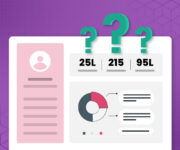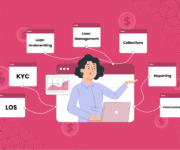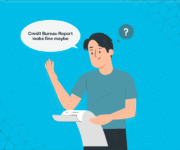One of the business tactics used by banks to earn interest is to offer debt in the form of loans. However, keeping a low non-performing loan rate is a challenging endeavour. It takes time and resources to complete the collection procedure for each possible defaulter.
The debt collection became even more challenging because debtors and consumers were put under financial strain during the pandemic. So how can you assure they will pay you first rather than the other organisations to which they owed money? An effective debt recovery strategy is the answer, and it can help organisations improve their collecting process dramatically.
This article will see how lenders and financial institutions can improve the debt recovery process using agile techniques and methods.
Improving Debt Recovery Strategy: The Big Picture
The big picture: Lending institutions have already set aside record sums for nonperforming loans, with the cost potentially spiralling if customers further fall behind on their repayments.
- Most lending institutions lack the resources or technological skills to achieve adequate results by utilising their current debt recovery strategy.
- On the other hand, debt recovery directly affects the revenues of the lenders.
- Apart from that, the COVID-19 outbreak is complicating debt collection.
- Debt collection is already strictly regulated by law. However, state officials and regulators tighten debt collection limitations to ease COVID-19’s financial strain on consumers.
What’s the effect? : Rise in indebtedness is a good thing for lenders. However, retrieving bad debts, which is also increasing, worries collectors.
- These factors collectively signal an unfavourable circumstance for lenders, should they remain shy from developing or investing in agile automation technologies.
- According to S & P Global Ratings, due to the pandemic, the oil price shock, and market volatility, Asia-Pacific banking’s non-performing assets and credit losses could grow by US$600 billion and US$300 billion, respectively, in 2020.
- A $27 billion or INR 2 trillion pile of stressed debt looms precariously in India. This amounts to 1/4th of the nation’s bad debts.
- Of course, tracking default debts is a significant overhead in the loan industry.
What should be done?: At the height of the fintech revolution, lenders and other financial providers have agile and automatic lending solutions at their disposal, as more SMEs are hunching towards lending.
Lenders can adjust their debt collection strategies to reduce loan losses in the future by making effective use of data and technology, including process automation.
Steps to a Successful Debt Recovery Strategy
Debt collection agencies sometimes struggle to recover debts from borrowers without overstepping their bounds. Delays in communication might lead to numerous calls and follow-ups to meet deadlines, more harmful than beneficial.
To follow this strategy, agencies must use current technologies and processes to maintain a safe, lawful, and long-term approach to collections. Here are some critical aspects to include in your debt recovery strategy to improve your chances of success while lowering costs.
1. Customer-oriented operations
Customer-focused operations aim to make payments simple, quick, and secure for customers (debtors). Collection agencies must explore accepting or utilising app-based payment methods in addition to web-based payment methods, given the development of smartphones and apps.
Collections may be made safe and straightforward through self-service portals such as payment applications, online payments, and automated phone calls. When a debtor has an easier time making payments, they are more ready to work out a payment plan.
Accepting payments online is currently the most straightforward and safest approach. Without using a third-party merchant credit card services company, which charges expensive fees and has stringent limits, you can send invoices and receive payments using tools like Square and PayPal.
There is also an increase in pre-programmed settlement websites where debtors can make offers to settle debts or set up payment plans without the need for human intervention.
2. Up-to-date communications
It is critical to stay updated with the latest technologies because communication channels constantly evolve.
Automating the debt collection process is essential since it will help reduce costs on collections while also ensuring consistent outcomes. In addition to increasing customer experience, automating the communication channels would facilitate faster payments, settlements, or reminders (by email/text).
Because many customers disregard calls from numbers they do not recognise, and fax machines are rarely used, older communication channels that are not effective should be examined or updated.
3. Use of applied analytics
You can avoid bad debts and problematic collections by incorporating analytics into the debt collection process. For example, you can examine a customer’s receivables using analytics, whether they are due weekly, quarterly, monthly, or in full on invoice receipt.
Once you understand the entire pattern of the customer’s accounts receivables, you can protect them against unwarranted risks. Analytics, for example, can help track customer payments and alert you if they are late regularly or gradually, allowing you to “get ahead” of any problematic accounts.
Overall, analytics can assist you in avoiding bad debt. As a result, your collection plan will be more successful and holistic, resulting in consistent cash flow.
4. Centralised debt collection
Creating a centralised system is one of the most effective strategies to save costs in your debt collecting activities. A centralised system is a software application that allows all collection personnel to see the same accounts in the same database.
When an issue emerges, it activates dialers and asks collectors to work or check accounts and send out alerts. When correctly set up and maintained, the system has all information about a specific receivable to the account manager, making it easy to view and search.
A centralised system that is simple to use and comprises all the proper information allows lenders to keep costs low and account time to a minimum.
Bottom line
Factors such as workflow, decision-making, customer-oriented service, data connectivity, and so on can all be part of a unified debt recovery strategy. These aspects can be combined to design a more advanced and individualised debt recovery strategy.
This type of debt collection strategy will not only save you money but will also enable you to recover more money by permitting personal contact with your most problematic debtors. In addition, this can assist you in converting debtors into valuable customers while also enhancing debt collection and settlements for your company.
Finezza’s Lending Lifecycle Management and Credit Evaluation services are among the best in the industry. Contact us today to integrate your services with Finezza and nail loan recovery.




Leave a Reply